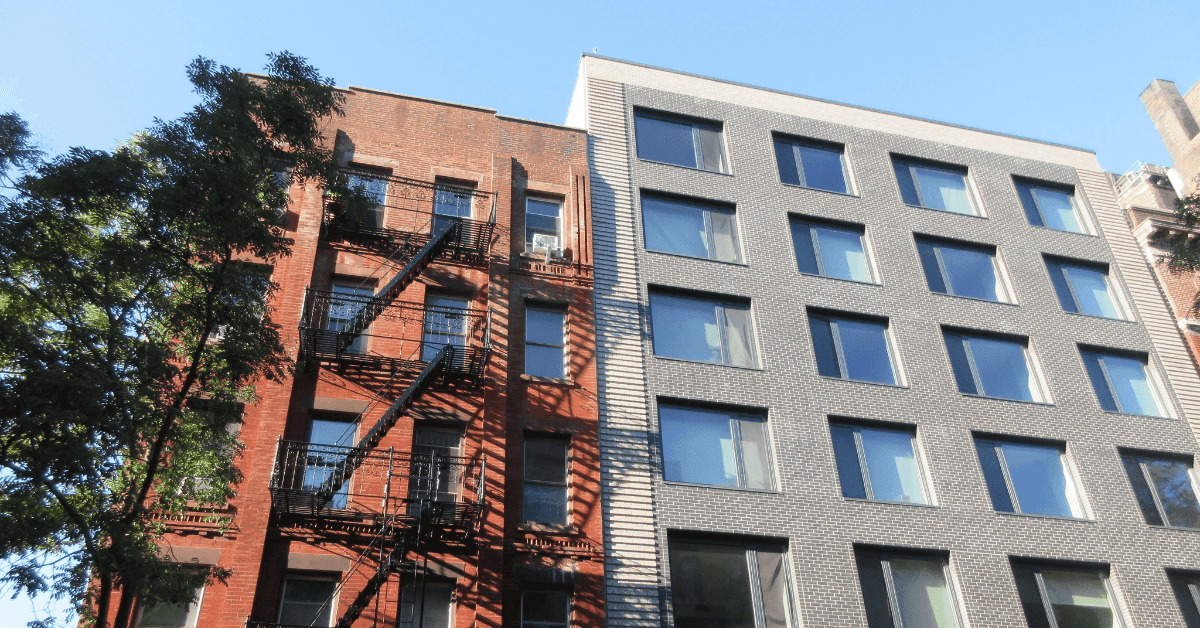
News
By Toccarra Nicole Thomas, September 18, 2024
Right now there are almost eight parking spaces per person in America amounting to almost two billion parking spaces, yet there is a housing shortage of almost two million housing units. How did we get here?

Parking minimums are a standard part of zoning ordinances in the United States, adopted during the highway boom to ensure that all drivers would have convenient access to their destinations. But arbitrary parking requirements have also left communities across the country with the predicament of having to build more parking than they need, putting a strain on development, including housing development.
Too much parking in the wrong places
Parking minimums for development projects are determined by the type of land use. For example, residential development and commercial development have different minimums. Multi-family housing is subjected to different requirements than a single-family home.
We might expect that, because parking mandates differ in this way, they must be tailored to the particular needs of different types of development. However, the persistent perception among drivers that there is never enough parking, despite the sheer amount of parking available in our communities, demonstrates that this is not the case.
There is in fact very little differentiation in parking minimum formulas, preventing parking mandates from properly responding to community context. A small mom-and-pop shop, for example, might be expected to build as much parking as a big box store. Homeowners interested in adding a rental unit to their basement or in their backyard (accessory dwelling units) or converting existing rooms into rentals, might be faced with parking mandates that require a parking space for every residential unit. This requirement precludes effective development of needed affordable housing units. Parking minimums for transit-oriented development can be similarly out of place, requiring prime real estate for dense, affordable housing around public transit, which could provide a range of benefits to communities, to be taken up by parking lots. Finally, existing surface parking lots and the requirements for parking minimums precludes the development of infill development.
Adaptive reuse projects, where an otherwise vacant building is converted for a different use, can face this obstacle at a larger scale. An existing building that is ripe for redevelopment from an existing use to a residential use might not have enough parking spaces available for its new purpose, creating an obstacle for developers.
Finally, existing surface parking lots and the requirements for parking minimums prevent infill development. Large surface lots and parking garages take up plots of land that could be used for businesses or housing, options that could prove to be more productive and a better fit for a community’s needs.
All this parking comes with a price

Developers working on multi-family housing projects in dense areas often must take on the additional expense of building multiple levels of parking to serve the building, either above or below ground. These parking costs are passed on to consumers via increased rents and/or property values.
Because parking represents an additional expense, these requirements tend to be one of the primary factors for whether a new development has the finances to complete construction. In other words, costs associated with parking requirements can prevent development from occurring altogether, or drive the price of new housing up.
When parking minimums constrain housing development, we all lose. Relaxing parking minimums can help reduce the burden on new housing development, ensuring that access to affordable housing isn’t swallowed up in a sea of parking.
The inequitable impact of the housing crisis
The housing shortage is felt most heavily by Black and Latinx households. According to the U.S. Department of the Treasury, the homeownership rate for white households was 75 percent, while the rates for Black and Latinx households were 45 and 48 percent respectively. (In 2020, the disparity between Black and white homeownership rates was the same as 1970, just two years after the Fair Housing Act was signed.)
Black Americans are more likely to be first-time buyers than white Americans, which can lead to higher upfront costs. They are also more likely to be denied mortgage loans. When there is not enough housing to meet demand, the cost of housing goes up, creating an even larger obstacle for homebuyers and adding additional financial burden to renters.
When is enough enough?
Parking requirements set over a century ago are preventing U.S. communities from responding to the pressing needs of the day, creating obstacles for development that could boost local economies and deliver more housing to the communities that need it most. But our local zoning ordinances don’t have to remain trapped in the past. Learn more about how communities can address the negative impacts of parking minimums by reading the rest of our series, Parking minimums: A barrier to smart growth.
Related News

© 2025 Smart Growth America. All rights reserved
Site By3Lane Marketing












